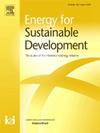Pathways for resource-based cities in China to achieve carbon peaking: A case study of Taiyuan, a resource-based provincial capital
IF 4.9
2区 工程技术
Q2 ENERGY & FUELS
引用次数: 0
Abstract
Resource-based cities require specialized energy planning solutions and policies due to their unique environments, which present both opportunities and challenges for developing effective energy policies. This paper utilizes System Dynamics (SD) and the Long-range Energy Alternatives Planning System (LEAP) models to examine the carbon peak pathway of resource-based cities. We apply the integrated SD-LEAP model to Taiyuan, a typical city in China's resource-based cities. This study examines three scenarios: the Industrial Transformation (ITR) Scenario, the Energy Efficiency Improvement (IMP) Scenario, and the Extended Development (EDV) Scenario. The findings demonstrate that several successful energy and climate policies can help build a low-emission economy based on energy-efficient businesses. One must carefully consider Taiyuan's situation and current obstacles when creating energy transition policies. A combination of aspects from the IMP and ITR scenarios could form an effective improvement plan for the future. Energy policies that are appropriately implemented and coordinated can facilitate Taiyuan's transition to a low-carbon economy.
中国资源型城市实现碳峰值的路径——以资源型省会城市太原为例
资源型城市由于其独特的环境,需要专门的能源规划解决方案和政策,这为制定有效的能源政策提供了机遇和挑战。本文运用系统动力学(SD)和长期能源替代规划系统(LEAP)模型对资源型城市碳峰值路径进行了研究。我们将SD-LEAP综合模型应用于中国资源型城市中的典型城市太原。本研究考察了三种情景:工业转型(ITR)情景、能效提升(IMP)情景和扩展发展(EDV)情景。研究结果表明,一些成功的能源和气候政策可以帮助建立一个基于节能企业的低排放经济。在制定能源转型政策时,必须仔细考虑太原的情况和当前的障碍。综合IMP和ITR情景的各个方面可以形成未来的有效改进计划。能源政策的适当实施和协调可以促进太原向低碳经济转型。
本文章由计算机程序翻译,如有差异,请以英文原文为准。
求助全文
约1分钟内获得全文
求助全文
来源期刊

Energy for Sustainable Development
ENERGY & FUELS-ENERGY & FUELS
CiteScore
8.10
自引率
9.10%
发文量
187
审稿时长
6-12 weeks
期刊介绍:
Published on behalf of the International Energy Initiative, Energy for Sustainable Development is the journal for decision makers, managers, consultants, policy makers, planners and researchers in both government and non-government organizations. It publishes original research and reviews about energy in developing countries, sustainable development, energy resources, technologies, policies and interactions.
 求助内容:
求助内容: 应助结果提醒方式:
应助结果提醒方式:


